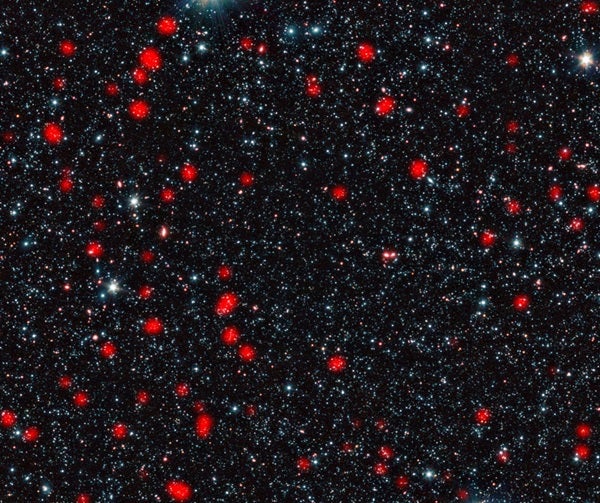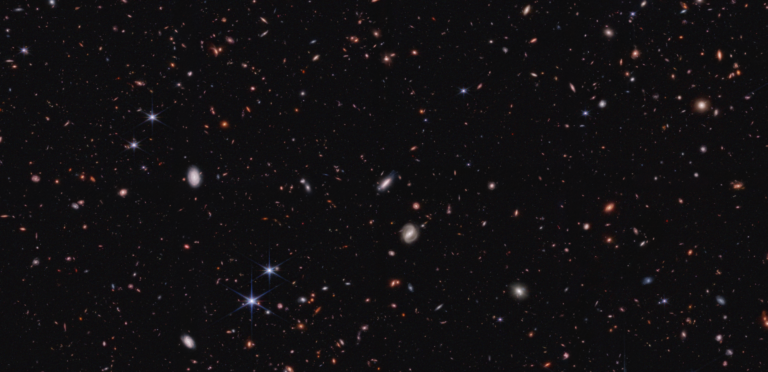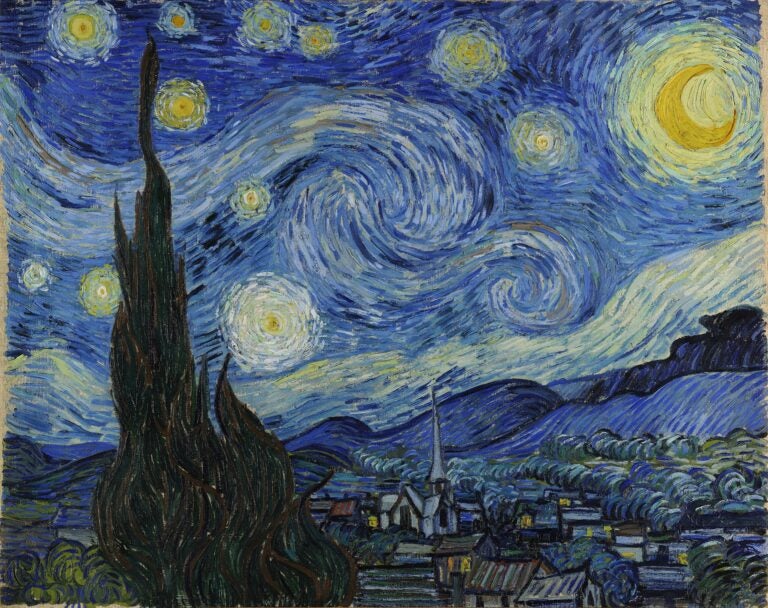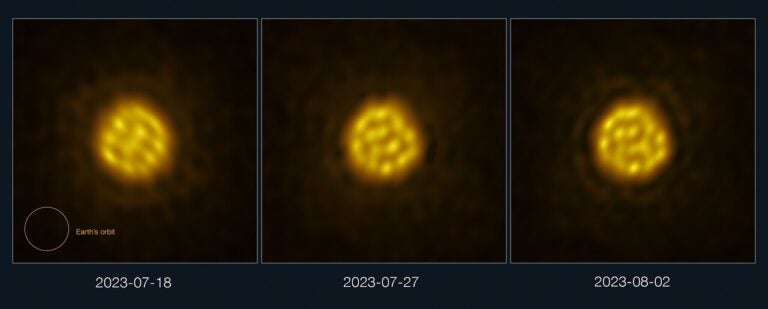The more closely the galaxies are clustered, the more massive are their halos of dark matter — the invisible material that makes up the vast majority of a galaxy’s mass. The new results are the most accurate clustering measurements ever made for this type of galaxy.
The galaxies are so distant that their light has taken around 10 billion years to reach us, so we see them as they were about 10 billion years ago. In these snapshots from the early universe, the galaxies are undergoing the most intense type of star formation activity known, called a starburst.
By measuring the masses of the dark matter halos around the galaxies and using computer simulations to study how these halos grow over time, the astronomers found that these distant starburst galaxies from the early cosmos eventually become giant elliptical galaxies — the most massive galaxies in today’s universe.
“This is the first time that we’ve been able to show this clear link between the most energetic starbursting galaxies in the early universe and the most massive galaxies in the present day,” said Ryan Hickox from Dartmouth College in Hanover, New Hampshire, and Durham University in the United Kingdom.
Furthermore, the new observations indicate that the bright starbursts in these distant galaxies last for a mere 100 million years — a very short time in cosmological terms — and yet in this brief time they are able to double the quantity of stars in the galaxies. The sudden end to this rapid growth is another episode in the history of galaxies that astronomers do not yet fully understand.
“We know that massive elliptical galaxies stopped producing stars rather suddenly a long time ago, and are now passive. And scientists are wondering what could possibly be powerful enough to shut down an entire galaxy’s starburst,” said Julie Wardlow from the University of California at Irvine and Durham University.
The team’s results provide a possible explanation: At that stage in the history of the cosmos, the starburst galaxies are clustered in a similar way to quasars, indicating that they are found in the same dark matter halos. Quasars are among the most energetic objects in the universe — galactic beacons that emit intense radiation, powered by a supermassive black hole at their center.
There is mounting evidence to suggest the intense starburst also powers the quasar by feeding enormous quantities of material into the black hole. The quasar in turn emits powerful bursts of energy that are believed to blow away the galaxy’s remaining gas — the raw material for new stars — and this effectively shuts down the star formation phase.
“In short, the galaxies’ glory days of intense star formation also doom them by feeding the giant black hole at their center, which then rapidly blows away or destroys the star-forming clouds,” said David Alexander from Durham University.







![Albireo (Beta [β] Cygni) is a classic example of a double star with contrasting colors.](https://www.astronomy.com/uploads/2024/08/Albireo.jpg)


